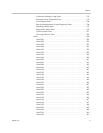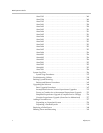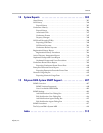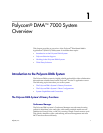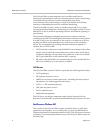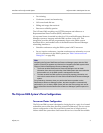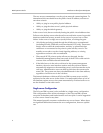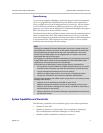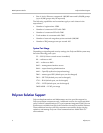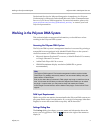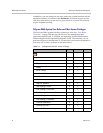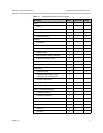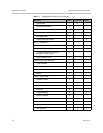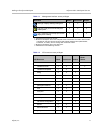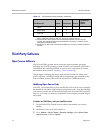
Introduction to the Polycom DMA System Polycom
®
DMA
™
7000 System Overview
Polycom, Inc. 5
Superclustering
To provide geographic redundancy and better network traffic management,
up to five geographically distributed Polycom DMA system clusters (two-
server or single-server) can be integrated into a supercluster. All five clusters
can be Call Servers (function as gatekeeper, SIP proxy, SIP registrar, and
gateway). Up to three can be designated as Conference Managers (manage an
MCU resource pool to host conference rooms).
The superclustered Polycom DMA systems can be centrally administered and
share a common data store. Each cluster maintains a local copy of the data
store, and changes are replicated to all the clusters. Most system configuration
is supercluster-wide. The exceptions are cluster-specific or server-specific
items like network settings and time settings.
System Capabilities and Constraints
The following capabilities and constraints apply to the entire supercluster:
• Number of sites: 500
• Number of clusters in a supercluster: 5 (not counting an integrated
Polycom RealPresence Resource Manager or CMA system)
• Number of MCUs enabled for conference rooms: 64
Note
Technically, a standalone Polycom DMA system (two-server or single-server) is a
supercluster that contains one cluster. All the system configuration and other data
that’s shared across a supercluster is kept in the same data store. At any time,
another Polycom DMA system can be integrated with it to create a two-cluster
supercluster that shares its data store.
It’s important to understand the difference between two co-located servers forming
a single DMA system (cluster) and two geographically distributed DMA clusters
(single-server or two-server) joined into a supercluster.
A single two-server DMA system (cluster) has the following characteristics:
• A single shared virtual IP address and FQDN, which switches from one server
to the other when necessary to provide local redundancy and fault tolerance.
• A single management interface and set of local settings.
• Ability to manage a single territory, with no territory management backup.
• A single set of Call Server and Conference Manager responsibilities.
A supercluster consisting of two DMA clusters (single-server or two-server) has the
following characteristics:
• Separate virtual IP addresses and FQDNs for each cluster.
• Separate management interfaces and sets of local settings for each cluster.
• Ability for each cluster to manage its own territory, with another cluster able to
serve as backup for that territory.
• Different Call Server and Conference Manager responsibilities for each territory
and thus each cluster.



